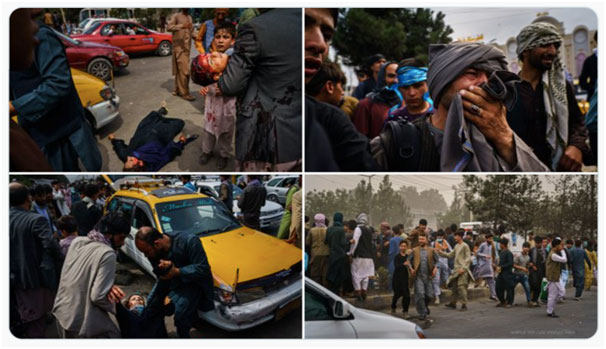The Rise of Taliban
Shreya Gautam
SSIS Batch 2020-22
30 September 2021

In northern Pakistan, during the early 1990s, the Taliban (in Pushto language meaning “students”) emerged when the Soviet troops were withdrawn from Afghanistan. The Pashtun movement predominantly started in Saudi funded religious seminaries which were preaching a harsh Sunni Islam law form. Taliban promised that once in power, they would be restoring peace as well as enforcing strict Sharia law in Pashtun areas (straddling Afghanistan and Pakistan).
Taliban soon gained influence starting from the south-western areas of Afghanistan. They captured Herat province in September of 1995, and exactly a year later Kabul was captured too overthrowing President Rabbani’s regime. Taliban was controlling almost 90% of Afghanistan by the year 1998. Early on, Taliban was welcomed with open arms since they curbed corruption and lawlessness, and ensured areas and roads under them were safe for commerce and trading. However, Taliban also introduced harsh punishments such as public execution for adulterers and murderers, cutting limbs of thieves, in accordance with their own strict Sharia law interpretation. They banned cinema, TV, music, and girls attending school over the age of 10. In fact, if women had to step out of the house, they had to be accompanied by some male, and needed to wear an all-covering burka. Meanwhile, men were supposed to grow beards. Since then Taliban has only been associated with cultural abuses, destruction, and human rights violations whether it was the Bamiya Buddha statue destruction or shooting Malala Yousafzai. Taliban was also accused of providing a safe sanctuary for al-Qaeda and Osama Bin Laden. In 2001, US headed military coalition attacked the Taliban regime in Afghanistan. As a result, the regime collapsed. However, the senior figures of the group evaded capture and fled.
In spite of the high number of foreign troops and US-backed attacks, the Taliban managed to gradually regain influence in Afghanistan. A lot of violence and attacks followed. In February 2020, a US-Taliban peace deal was struck. Despite the concerns expressed by the Afghan official and the international community, US president Joe Biden decided to retrieve all US troops from Afghanistan by 11th September. As feared, Taliban recaptured all major provinces, and now the capital Kabul. It has successfully toppled the government, and established its hold on the country.
Despite peace promises, Taliban is attacking women and children at the Kabul airport. People trying to flee the country now are being subjected to attacks from the Taliban. Videos are emerging where Taliban fighters are seen roaming in the streets opening fire to search for ex-government officials and workers. Joe Biden in an interview said, “Afghanistan is not our problem”. The questions here is whether is it really not a US or in fact a world problem for that matter. We see such injustice happening right in front of our eyes, and no one is doing anything to help those stuck in Afghanistan except for giving out futile warnings and predicting the horrors that will follow. As Martin Luther King said, “Injustice anywhere is a threat to justice everywhere.” Of course, Afghanistan would be a US ‘problem’ as well as a world ‘problem’ for it would forever be seen as a global failure at ensuring peace and security, and safeguarding human rights.
.png)

.jpg)